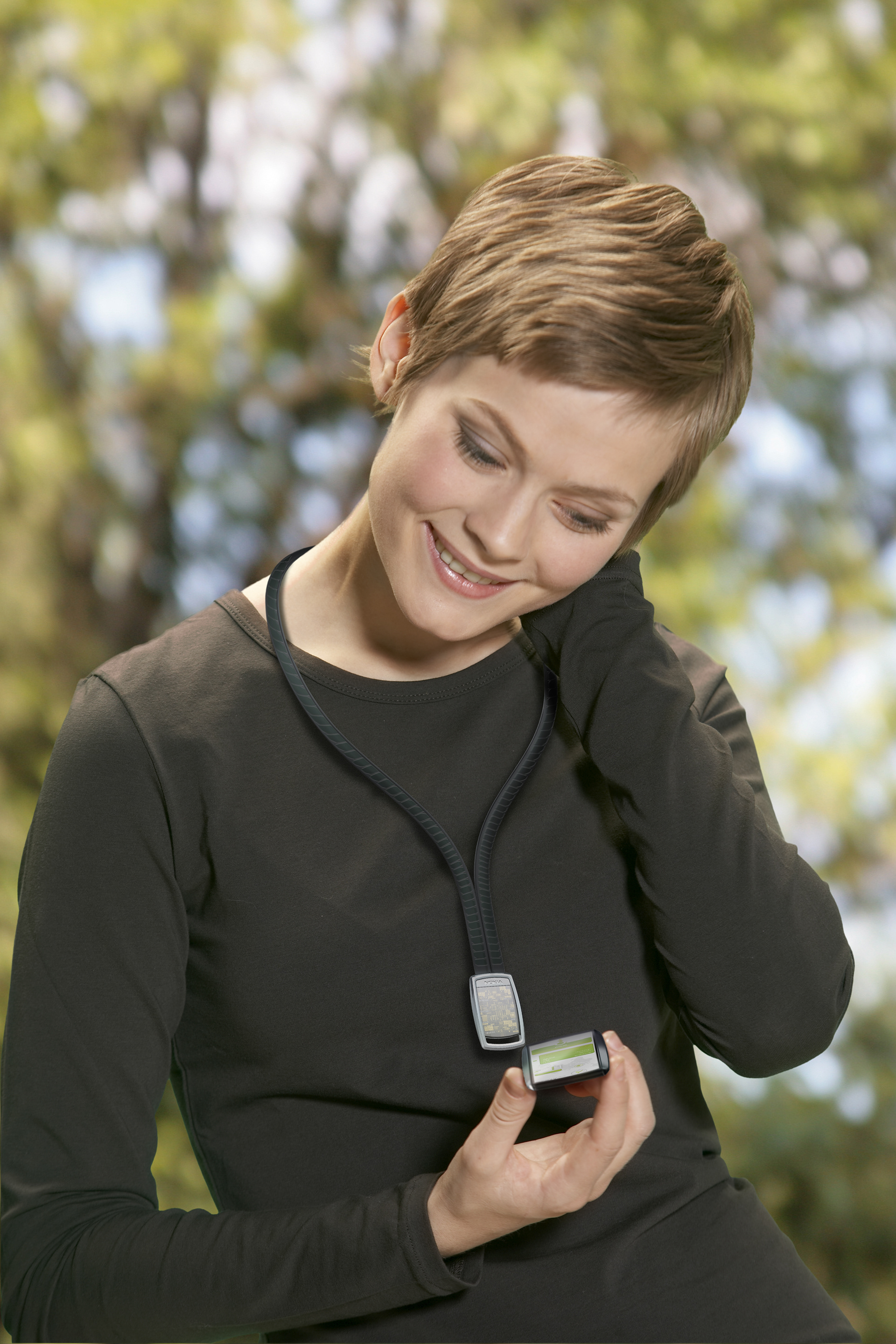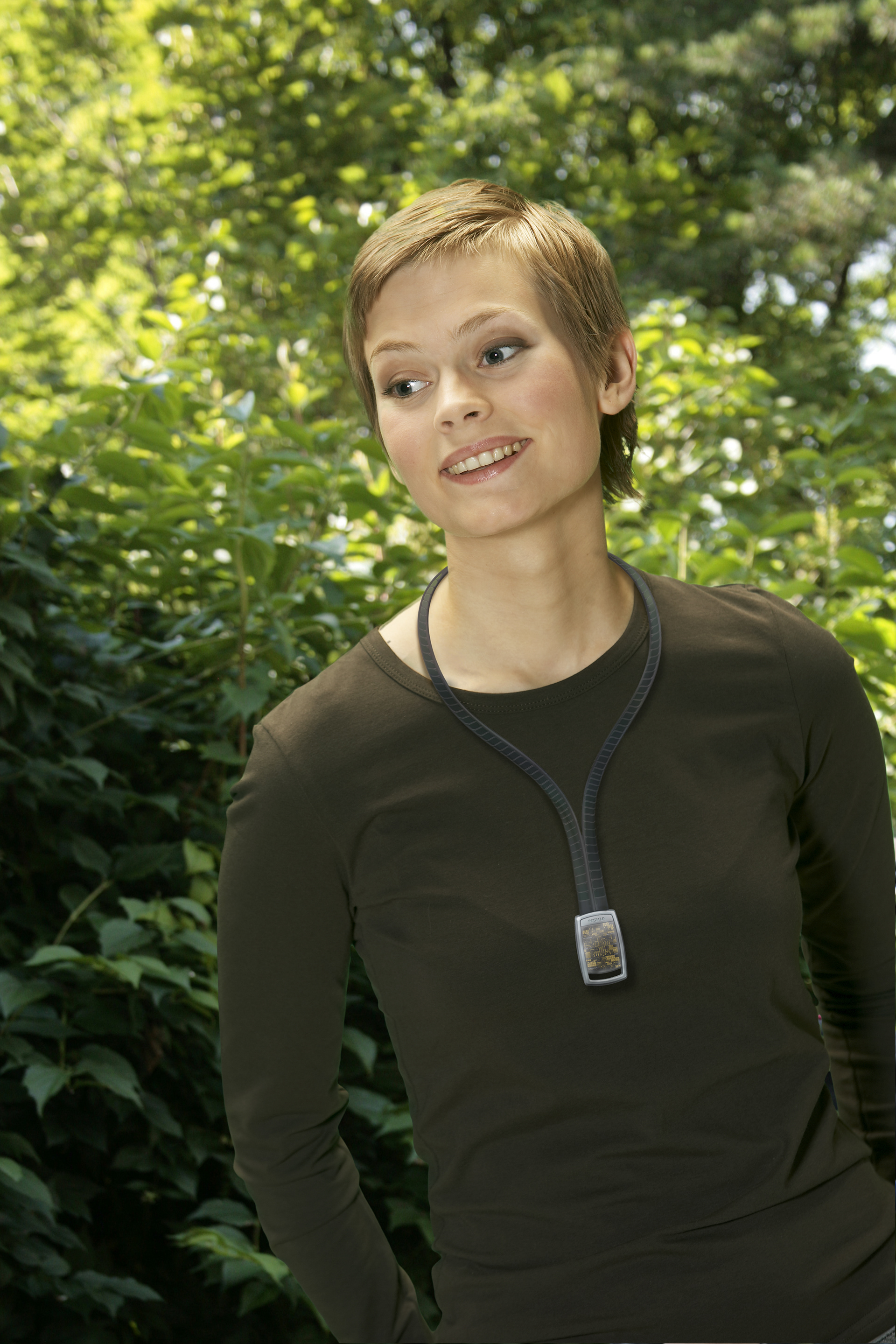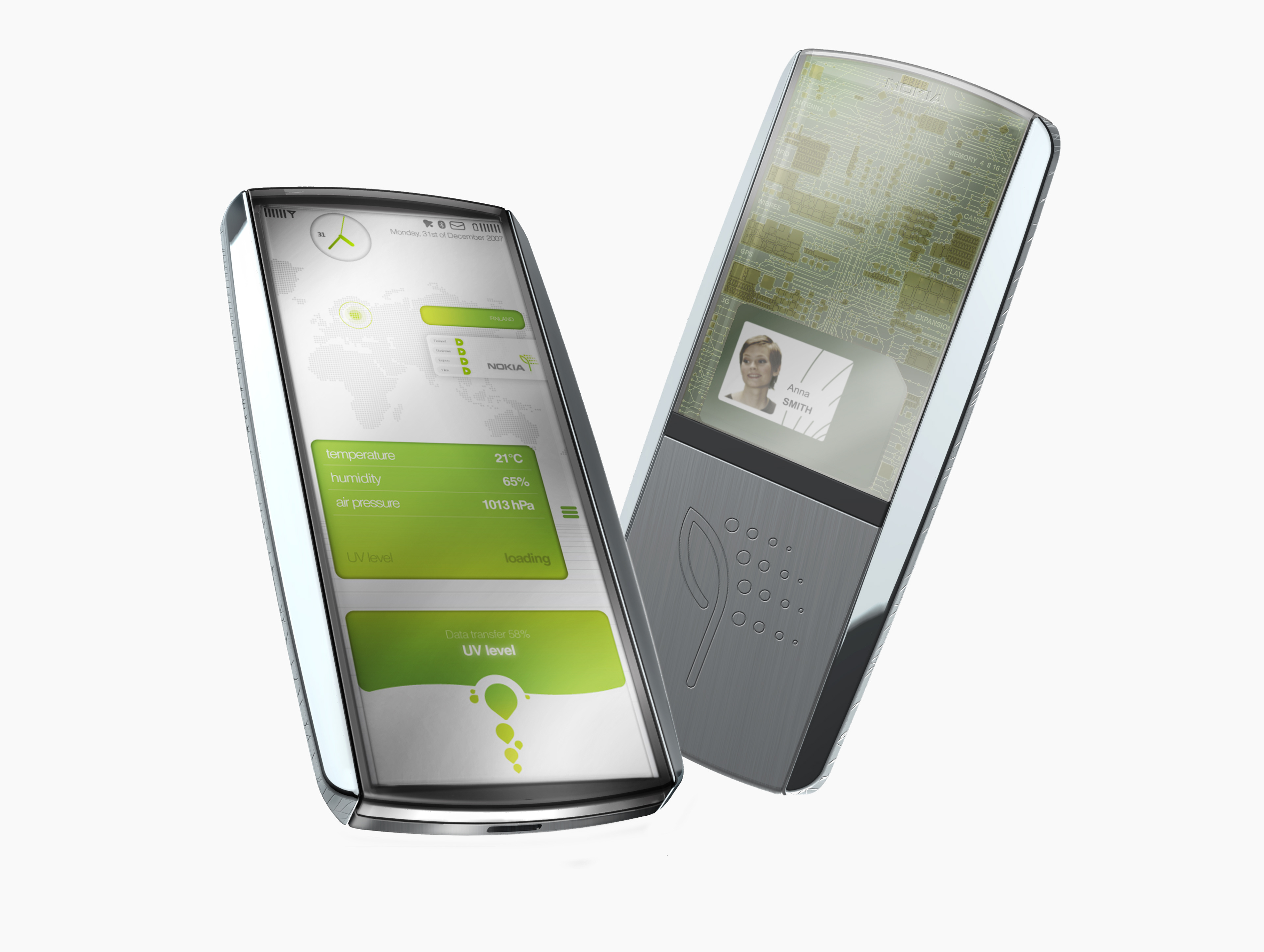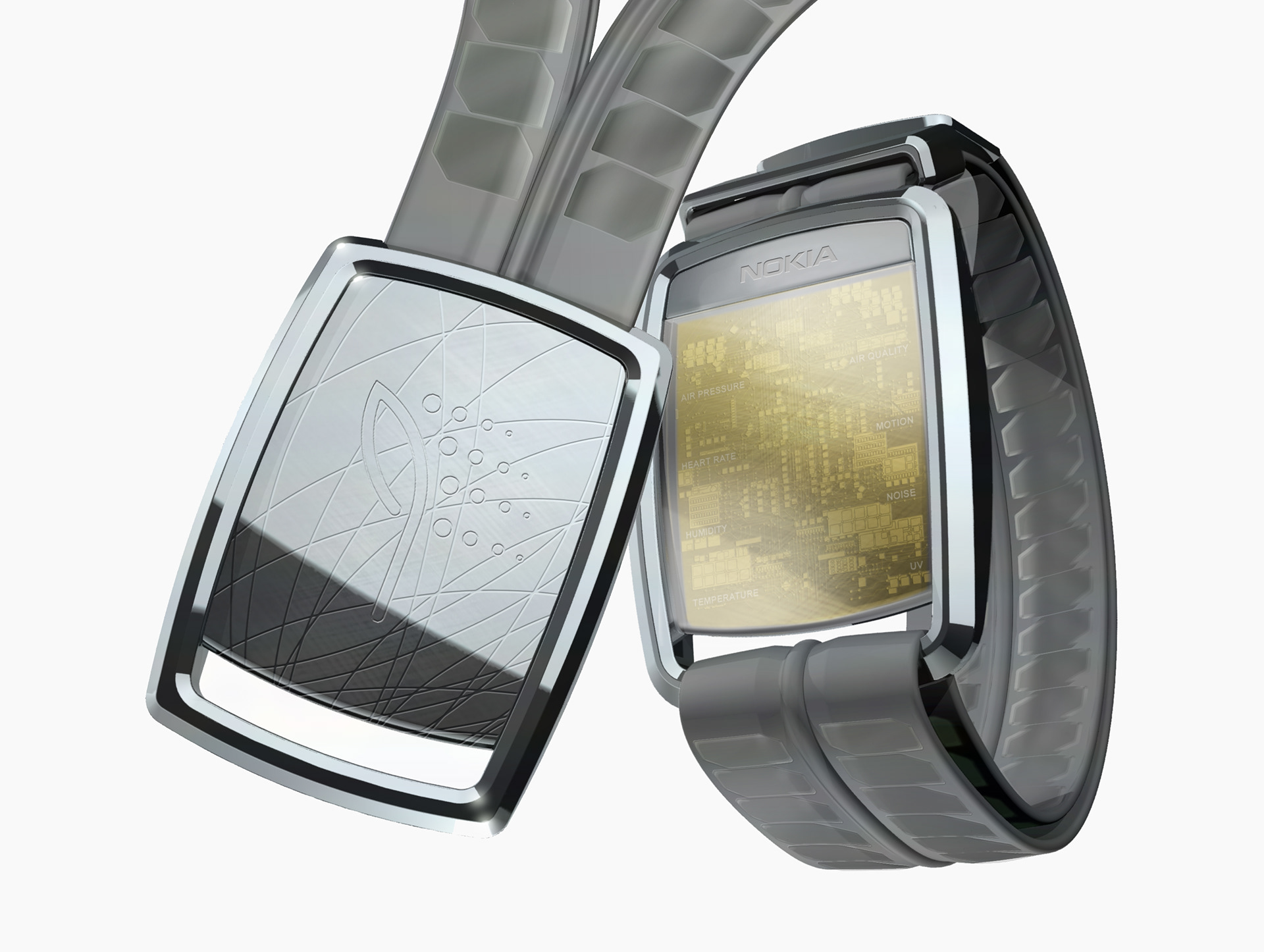At the cutting edge of innovation
We envision developing mobile technologies in new ways to help us all reduce our environmental footprint. To meet our future vision, the Nokia Research Center supported by Nokia designers conceived the Nokia Eco Sensor Concept. Our visionary design concept is a mobile phone and compatible sensing device that will help you stay connected to your friends and loved ones, as well as to your health and local environment. You can also share the environmental data your sensing device collects and view other users’ shared data, thereby increasing your global environmental awareness.
I was one of the original concept creators and Design Manager of Eco Sensor Concept. The concept was launched in 2008 and demonstrated in CES.





The concept
The concept consists of two parts – a wearable sensor unit which can sense and analyze your environment, health, and local weather conditions, and a dedicated mobile phone. The sensor unit will be worn on a wrist or neck strap made from solar cells that provide power to the sensors. NFC (near field communication) technology will relay information by touch from the sensors to the phone or to or to other devices that support NFC technology. Both the phone and the sensor unit will be as compact as possible to minimize material use, and those materials used in the design will be renewable and/or reclaimed. Technologies used inside the phone and sensor unit will also help save energy.
Stay in touch with your health and local environment
To help make you more aware of your health and local environmental conditions, the Nokia Eco Sensor Concept will include a separate, wearable sensing device with detectors that collect environment, health, and/or weather data. You will be able to choose which sensors you would like to have inside the sensing device, thereby customizing the device to your needs and desires. For example, you could use the device as a “personal trainee” if you were to choose a heart-rate monitor and motion detector (for measuring your walking pace). Here are some other examples of customized sensing devices you could build:
Environmental monitoring
Atmospheric gas-level monitor (including carbon monoxide, particulate matter, and ground-level ozone detectors, for example)
Ultraviolet radiation sensor
Subscription to environmental catastrophe warning and guidance system
Atmospheric gas-level monitor (including carbon monoxide, particulate matter, and ground-level ozone detectors, for example)
Ultraviolet radiation sensor
Subscription to environmental catastrophe warning and guidance system
Personal health
Motion detector
Heart rate monitor
Noise level monitor
Motion detector
Heart rate monitor
Noise level monitor
Weather monitoring
Air pressure sensor
Humidity sensor
Temperature sensor
Subscription to environmental catastrophe warning and guidance system
Air pressure sensor
Humidity sensor
Temperature sensor
Subscription to environmental catastrophe warning and guidance system
A mobile device that builds on the "three Rs"
Reduce, reuse and recycle: the Nokia Eco Sensor Concept is built upon all three of these underlying principles of waste reduction. Emphasis will be placed on materials use and reuse in the phone’s construction:
Printed electronics
Printed electronics is an innovative technology in which simple components are created by printing electrically conductive inks (nanoinks) onto surfaces such as plastic using standard printing processes. The technology allows us to create smaller electronic components – and smaller components mean more compact phones!
Bio-materials
Bio-materials, such as polylactic acid (PLA) plastics with plant or other biomass-based modifiers, can help to reduce the use of non-renewable materials. An additional bonus is that the energy required to produce PLA - from raw material toBio-materials, such as polylactic acid (PLA) plastics with plant or other biomass-based modifiers, can help to reduce the use of non-renewable materials.
Reclaimed materials
The phone’s casing will be made from 100% reclaimed steel. Imagine – your scrapped car could become part of your next mobile phone!
A phone for the energy-conscious consumer
To complete the Nokia Eco Sensor Concept, the phone and detector units will be optimized for lower energy consumption than phones in 2007 in both the manufacturing process and use. Alternative energy sources, such as solar power, will fuel the sensor unit’s power usage. Thus, we aim to create a self-powered sensing device to reduce dependence on external, non-renewable energy sources.
Printed electronics
Printed electronics consume less energy during manufacturing than traditional circuit board production and will be used in the phone, detection units, and their chargers.
Display screens
Display technologies widely in use in 2007, such as liquid crystal display (LCD) or organic light-emitting diode (OLED), are continuously evolving – resulting in increasingly energyefficient screens. But other technologies, such as electrowetting, also exist that produce screens that consume less energy than LED or OLED displays.
Electrowetting is the process of applying electrical voltage to tiny drops of oil, causing the droplets to expand and contract. When compressed under the display glass, expanding droplets produce an effect similar to a pixel "lighting up," whereas contracting droplets can be compared to a pixel "turning off."
Alternative energy sources
The wearable sensor unit will be powered by alternative energy sources, and may incorporate multiple energy technologies:
Solar energy will be harvested from the device strap, which would be made from solar cells.
Kinetic (energy derived from motion) and heat energy might also be harvested from the user, in the way some wristwatches already get their power.
Solar energy will be harvested from the device strap, which would be made from solar cells.
Kinetic (energy derived from motion) and heat energy might also be harvested from the user, in the way some wristwatches already get their power.
Innovative Services
The possibilities to introduce creative and useful mobile applications and web services that build upon the environmental data collected from such a design concept are numerous. These services can range from personal health monitoring and improvement, to large-scale collective efforts to promote sustainable lifestyle choices. Even very simple environmental variables can bring about novel solutions when shared and integrated into a global network of mobile explorers.